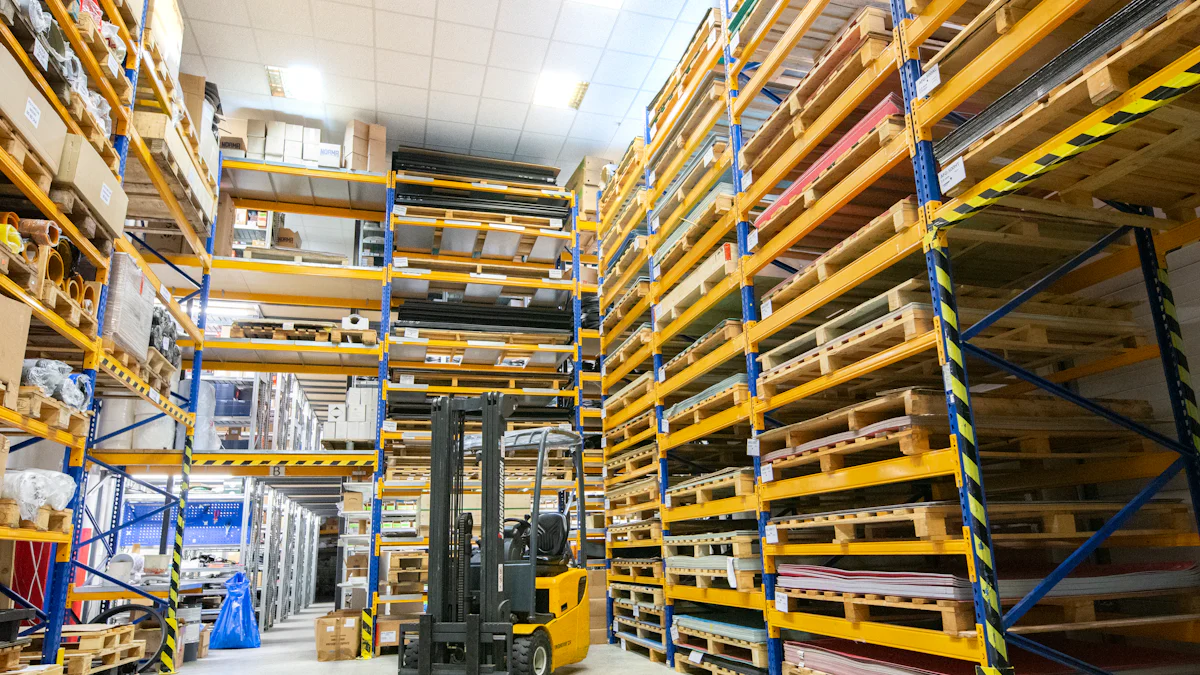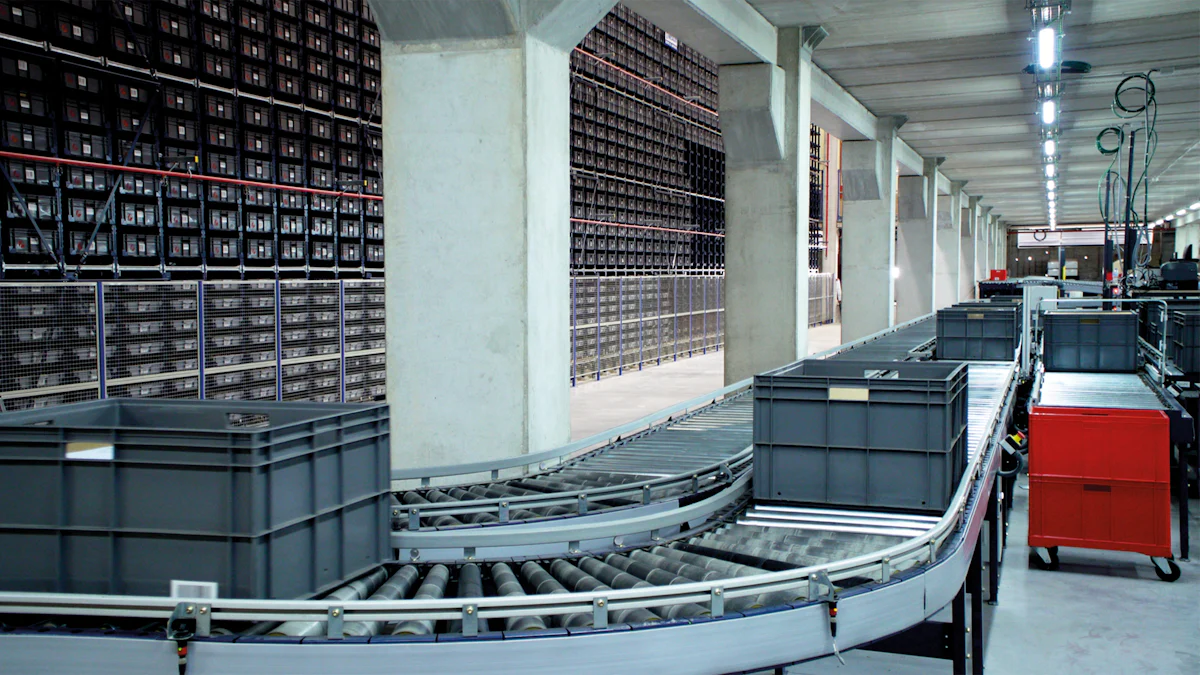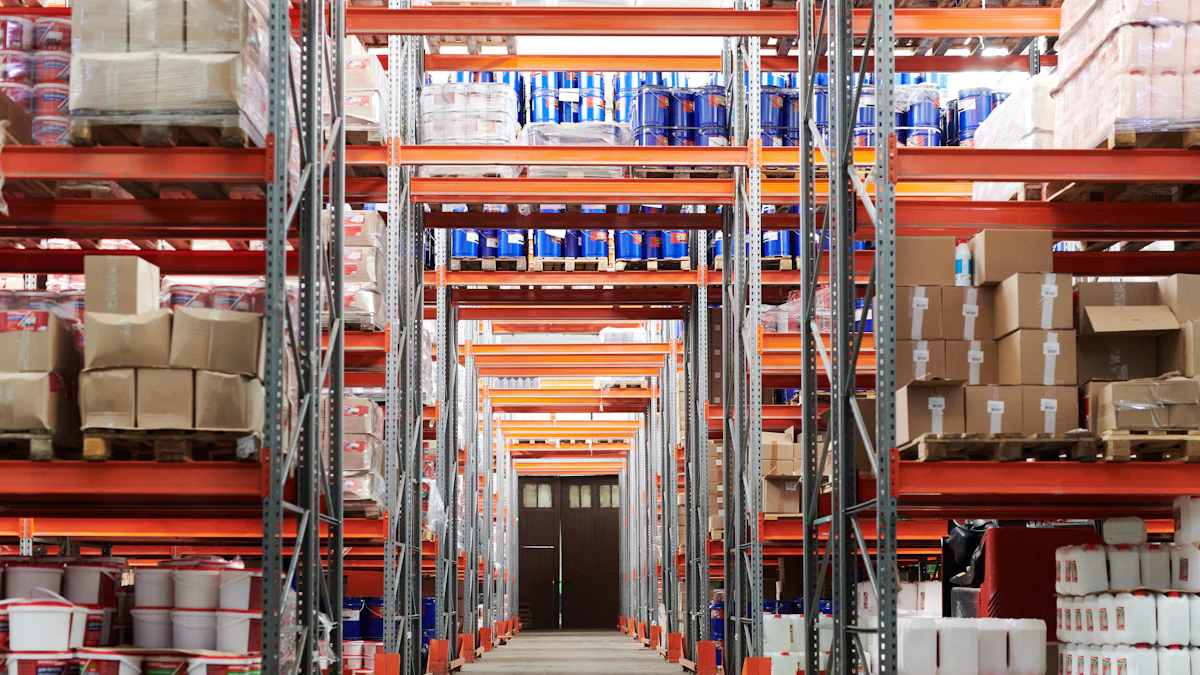Warehouse Automation: A Comprehensive Guide to Systems and Benefits

Warehouse automation revolutionizes modern logistics by leveraging cutting-edge technologies to enhance operational efficiency. With the global market projected to reach $44 billion by 2028, the significance of warehouse automation cannot be overstated. This blog will delve into the definition and scope of warehouse automation, explore market trends, and highlight key players in the industry. Join us on this insightful journey to uncover the transformative power of warehouse automation.
Overview of Warehouse Automation
In the realm of modern logistics, warehouse automation stands as a beacon of innovation and efficiency. Defined by its utilization of cutting-edge technologies to streamline operations, warehouse automation is reshaping the landscape of supply chain management. The scope of warehouse automation extends far beyond mere mechanization; it represents a fundamental shift towards enhanced productivity and operational excellence.
Definition and Scope
What is Warehouse Automation?
At its core, warehouse automation encompasses a spectrum of technologies aimed at reducing manual intervention in warehouse processes. By leveraging robotics, computer systems, and automated material handling equipment, companies can optimize their workflows and achieve unprecedented levels of efficiency.
Scope of Warehouse Automation
The scope of warehouse automation transcends traditional boundaries, offering solutions that cater to diverse operational needs. From inventory management to order fulfillment, every facet of warehouse operations can benefit from the implementation of automated systems.
Market Trends
Global Market Size
The exponential growth of the global warehouse automation market underscores its pivotal role in modern business landscapes. With projections indicating a market value set to soar to $44 billion by 2028, the industry's trajectory is nothing short of remarkable.
Growth Drivers
Several factors drive the rapid expansion of the warehouse automation sector. Advancements in artificial intelligence (AI) and robotic technologies play a significant role in enhancing operational efficiencies and driving cost savings for businesses worldwide.
Key Players
Leading Companies
Dematic, renowned for its pioneering spirit since 1819, stands at the forefront as one of the industry's leading providers of intelligent automation solutions. Their commitment to innovation has set new benchmarks for excellence in warehouse automation.
Innovations in the Field
Innovative solutions from companies like Exotec are revolutionizing warehouse operations with their state-of-the-art robotic automation systems. These advancements not only boost efficiency but also pave the way for enhanced resiliency and economic growth on a global scale.
Types of Warehouse Automation Systems

Manual Warehouses
Characteristics
In manual warehouses, human labor predominantly drives the operations, with minimal automation involved.
Workers manually handle tasks such as picking, packing, and transporting goods within the facility.
These warehouses rely on traditional storage systems like shelves and racks to organize inventory.
Examples
Traditional Retail Stores: Many brick-and-mortar retail outlets operate as manual warehouses where employees manage inventory manually.
Small-Scale Storage Facilities: Local storage units often function as manual warehouses due to their limited scale and operational needs.
Partially Automated Warehouses
Characteristics
Partially automated warehouses blend human labor with automated technologies to optimize efficiency.
Automated Storage and Retrieval Systems (AS/RS) are commonly used in these facilities for efficient inventory management.
Conveyor systems play a crucial role in streamlining material flow and enhancing order fulfillment processes.
Examples
Distribution Centers: Many distribution centers incorporate AS/RS solutions to store and retrieve goods quickly and accurately.
Manufacturing Plants: Production facilities often utilize conveyor systems to automate material handling and improve workflow efficiency.
Fully Automated Warehouses
Characteristics
Fully automated warehouses operate with minimal human intervention, relying heavily on robotic systems for various tasks.
Physical warehouse automation technologies such as robotic arms and automated guided vehicles (AGVs) dominate the operational landscape.
These facilities prioritize speed, accuracy, and space optimization through advanced automation solutions.
Examples
E-commerce Fulfillment Centers: Online retailers leverage fully automated warehouses to expedite order processing and enhance customer satisfaction.
High-Tech Distribution Hubs: Technologically advanced distribution hubs implement robotic systems for efficient storage and retrieval operations.
Benefits of Warehouse Automation

Increased Efficiency
Time Savings
Implementing warehouse automation leads to significant time savings in operational processes. By leveraging cutting-edge technologies, companies can streamline their workflows and achieve unprecedented levels of efficiency. Automated systems expedite tasks such as order processing, inventory management, and material handling, resulting in optimized operational timelines.
Warehouse automation reduces operation costs by 25% to 50% while increasing productivity by up to 400% to 600% compared to manual operations. Automated warehouses can deliver 2 to 3 times more orders daily compared to traditional warehouses. Automation also improves accuracy to above 99% and cuts down on order cycle times. Automated warehouses utilize the consistency, speed, and accuracy of machines to achieve much higher levels of efficiency and throughput.
Space Optimization
Space optimization is a key benefit of warehouse automation systems. By maximizing storage capacity through efficient utilization of space, companies can enhance their inventory management capabilities. Robots and automated guided vehicles (AGVs) play a crucial role in optimizing space within warehouses by efficiently organizing goods and minimizing wasted storage areas.
Cost Reduction
Labor Costs
Warehouse automation significantly reduces labor costs by automating repetitive and physically demanding tasks that were traditionally performed by human workers. This reduction in reliance on human labor not only decreases operational expenses but also enhances overall workforce efficiency.
Automation can reduce your reliance on human labor to complete repetitive and physically demanding tasks. Warehouses with automation systems are 36% more likely to experience reduced labor costs and 76% more likely to have enhanced inventory accuracy.
Operational Costs
Operational costs are substantially reduced through the implementation of warehouse automation solutions. By automating tasks like picking, packing, shipping, and storage, companies can streamline their operations and eliminate inefficiencies that lead to unnecessary expenses.
Automating tasks like picking, packing, shipping, and storage can speed up warehouse operations, leading to increased productivity. Also, automating repetitive tasks can prevent errors and improve order fulfillment accuracy.
Improved Accuracy
Error Reduction
One of the primary advantages of warehouse automation is the significant reduction in errors during operational processes. Automated systems ensure precision in tasks such as order fulfillment and inventory management, minimizing the occurrence of costly mistakes that impact customer satisfaction.
Enhanced Inventory Management
Warehouse automation enhances inventory management practices by providing real-time visibility into stock levels and locations. This improved visibility enables companies to optimize their inventory control strategies, reduce stockouts, prevent overstock situations, and ultimately enhance supply chain efficiency.
In summary, the blog explored the diverse landscape of warehouse automation, from manual warehouses to fully automated systems. The significance of warehouse automation in modern logistics cannot be overstated, with companies leveraging cutting-edge technologies to enhance operational efficiency. Looking ahead, future trends indicate a continued rise in adoption rates for autonomous mobile robots (AMRs) and automated guided vehicles (AGVs). Companies are embracing these innovations to optimize their workflows and achieve unprecedented levels of efficiency. The evolution of warehouse automation continues to shape the future of supply chain management, paving the way for enhanced productivity and operational excellence.
